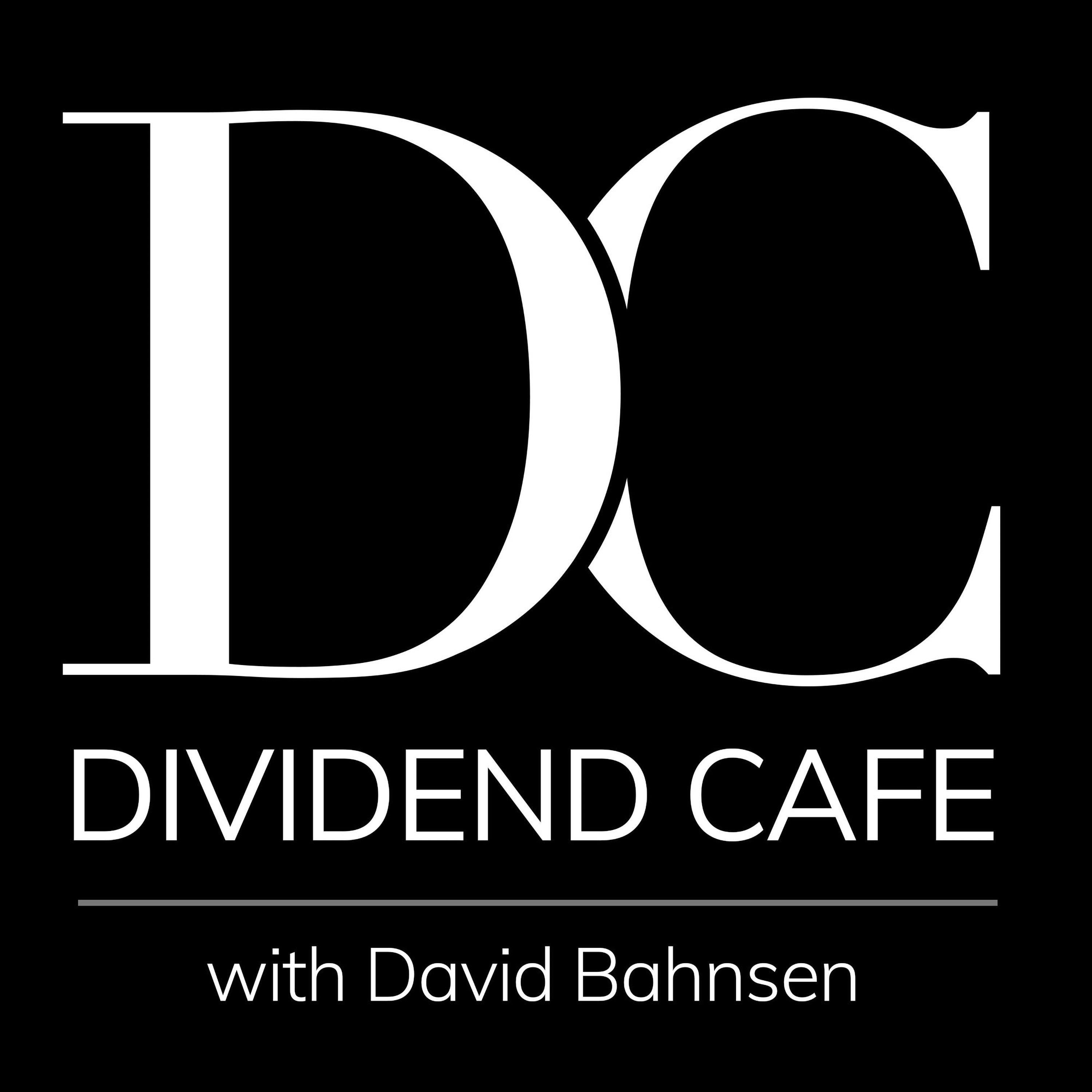Dear Valued Clients and Friends,
This was a big week in the Bahnsen household, but really for many families all over the country. Joleen and I celebrated the graduation from high school of our firstborn son, Mitchell. Many of you likely had kids, grandkids, and loved ones celebrate some graduation as well (college or high school). They are all special and memorable, and if you suffer from the same chronic nostalgia syndrome that I do, maybe these events bring back memories of your own graduation. I believe some of the emotion this week was not just in seeing our own firstborn celebrate this milestone but also in the gratitude I have for the high school he attended, a passion project of mine for the last ten years. A lot more has gone into this week than meets the eye, and I feel truly blessed.
But my love for Mitchell goes beyond the desire I had for him to have a formative and memorable high school experience (something I am confident he did). I also want him to experience the deepest levels of human flourishing as an adult. As formative and memorable as our high school years ought to be, they really are meant to prepare us for something, and that “something” is our adult life. Today so many young people enter adulthood with a sense of pessimism, gloom, and uncertainty. There is often widespread financial ignorance as to “how to be,” and there is almost always an underlying negativity about the economic trajectory of our communities, or country, or even the world. The positive of high school graduation can be met with the daunting challenges of adult life in the category of finance, vocation, and economics.
I want to devote this week’s Dividend Cafe to that young man or woman leaving high school or college, ready to start adult life. I imagine there will be some takeaways that seem relevant to all readers. But my special focus is on those entering adult life looking for some broad, practical takeaways about finance and economics. Our entry into adulthood is hard enough as it is – there is no reason to make it harder with a stunted worldview on such an important part of human life.
So that end, we work, and let’s dive into a special Dividend Cafe “letter to a high school graduate.”
Dear Graduate –
Of course, the first thing that must be said is “congratulations.” I am sure you feel a sense of relief that have this moment behind you. Whatever it took for you to see this through, congratulations, and I hope you will always be able to look back on your high school years with fondness and joy. It is a special rite of passage in one’s life, and those years are supposed to be memorable, intellectually formational, and socially satisfying. I had several traumatic events happen in my high school years, and yet somehow look back on those years as deeply rewarding, certainly memorable, and most of all, preparatory for the life God had for me. I wouldn’t change a thing (and even if I would, I hope you know that isn’t really the way it works).
Hold fast to your memories, and hold fast to your friendships. Many people do not maintain the friendships they form in high school, and that is usually not sinister. People get older, they move around, they start families, and the spontaneous reality of life organically causes certain friendships to dissipate. But I will say this – if you want to keep any particular high school friendships together, you can do so. It is always a choice. But it will take some intentionality, so be aware of that—just my two cents.
Financial Practicality
As much as I would love to devote my whole letter to personal and relational advice, no one really cares what I have to say in those categories. Plus, I am only 49 years old, and there are a lot of people with more “life advice” wisdom than I have (because 49 is really quite young, I assure you). And even if I were in my 70’s now, I have sworn to myself that I will never, ever be “that guy” who feels the need to share with everyone they meet all the wisdom their gray hairs have to offer. So I will stay in my lane and talk finance and economics from here on out. And if you want marital or relational advice, I will refer you to someone more qualified than I …
Let me just start by saying something extremely obvious, much easier said than done, and yet foundationally important to the level of financial anxiety you will have or not have in the first decade of your adult life.
Avoid credit card debt like it is the black plague, bubonic plague, and Spanish flu all rolled into one.
This may seem obvious, and it may seem easy (“I would never do what I have heard those other people do!”), and it may seem simplistic. Doesn’t everyone know this?
The answer is no; they do not.
But I actually am saying something far more profound than merely avoiding credit card debt because of the financial burden servicing it puts on you in your early earning years. I am speaking about habit formation, as well. There is a mentality and character that one who avoids credit card debt has, which stays with them into the future decades, and inversely there is a mentality and character habit that one who defaults to spending borrowed money will likely keep, as well. It doesn’t go away easily. The greatest thing you can do is never develop those habits, to begin with.
If you use a credit card for monthly spending, pay it off in full every single month no matter what, or do not use it. Now, right now, you may be calling me a “boomer” in some sort of derogatory and insulting way since everyone knows people now use “Apple Pay” and not a credit card. But first of all, I am not a boomer – I am GenX, so joke’s on you! Second, your Apple Pay is connected to a revolving credit account, so I am not the one being an idiot. I think establishing credit, generating airline miles, and all that stuff are great. And I don’t even know how much longer some places will let you pay cash, and certainly carrying around a wad of cash is not as cool as holding up your phone to a digital reader, so let’s just not get caught up in the mechanics. You will spend some money, and the way you do, it is immaterial to my point – which is to spend money that you actually have. When the bill comes, pay it. Because the first time you realize that you can carry the balance to the next month, and the next month, and that you can push your level of disposable spending above your actual level of disposable income, will not be your last.
Do. Not. Let. It. Happen. To. You.
Credit card balances are expensive because of interest, sure. In fact, once a balance gets high, the lifetime cost of interest will far exceed the actual purchase amounts themselves. The credit card companies will like you if you max out your cards and keep paying the minimum payment faithfully. They will even raise your limits and send you new cards. And at that point, you are going to be in a dangerous spiral. The debt balance will accumulate to a point that you will never be able to enjoy making more money because such a large part of your income will be going to debt relief. It will be costing you money to service debt and costing you even more in opportunity costs to not be investing that money. And it will make you hate your job (“I am working just to pay for things I enjoyed three years ago”). And it can hurt your marriage, or even your eligibility to be married. And it can torture your soul.
Don’t run up credit card debt, period. If this is all you remember from this letter, I am fine with that. Only spend the money you have.
College and Beyond
By now, you and your parents have probably made a decision about what you are doing next. You may be going to college, and you may not be. You may be taking student loans, and you may not be. Each person’s goals and situation are different, and I can’t address all variable circumstances in one letter. But here is what I will say: Do not live your college years believing that the degree you get will guarantee you financial security because it will do no such thing. And do not live your college experience believing it is needed to have a successful life. Bill Gates, Mark Zuckerberg, and David Bahnsen have a combined net worth of over $200 billion, and none of us have a college degree (this is one of my favorite things to say). It can be a vital time in one’s life, but your educational and intellectual development at this point is going to come far more from your own study and your own discipline than anything else. If you are going to college, enjoy it. Take it seriously, but enjoy it. Narrow down the focus of what you want to do with your life and who you want to be, but stay flexible to the various doors that may or may not open.
Embrace your post-education life as the opportunity to marry your passions to your skills, but don’t be naive about what that means. Rich people get to say things like “chase your passions” (because we already have the freedom to do so). Yet don’t be cynical and fall for the nonsense that you have to do something you hate forever just to pay the bills. Harmonize these various realities all at once – that doors open and close, and that has to matter, all the while you pursue something you are good at (or want to be good at, or can one day be good at), presumably in a field or lane you enjoy.
As Scott Galloway is fond of saying, you will be amazed at how passionate you can become at something that it turns out you are really good at that someone wants to pay you a lot of money to do. And you will be amazed at how passionless you can become at something you aren’t really wired to do. That realization pretty much ended my career path as a male model. And here we are. (If I get one email asking if I am serious, I am going to laugh, but not as hard as my wife and kids will).
The Cult of Housing
It is a lot of fun to own a home. Some people who own a home for a long time, who bought at the right time, and who pay their mortgage down over time even end up with price appreciation in the home and a great equity base eventually. But here are David Bahnsen’s five principles of home ownership that should be remembered:
(1) Do not buy a house, condo, or any other form of residential real estate without a minimum of 20% down. 25-30% is better. Enter with “protective equity” – it gives you skin in the game, it signifies that you can afford what you are buying, and it drastically reduces the chance of a desperate need to sell into a loss. It leaves you in a healthy position financially for whatever may happen.
(2) Do not believe the liars and charlatans who lack math skills who tell you that buying a home will get you rich. When someone tells you they bought a house for $300,000 and now it is worth $2 million, grab an HP12c calculator and do the math on how many years are involved and what the actual “compound annual growth rate” is (it will blow your mind how unimpressive it is). THEN, add back into the purchase price all of the insurance payments, the tax payments, the HOA, the maintenance, the upgrades, the this and the that, and then re-do the math. At that point, you will realize you have been lied to by a math-challenged society. Buy a home if you want to have a great place to live and raise your family, but not because it will make you a lot of money. Speculation is not an investment and a huge perpetual need of cash outlay is not an investment.
(3) Do not buy a home you can’t afford because of what other people are doing, or a desire to keep up with the Joneses. Our whole world did this once in the years right before and after your birth, and it almost destroyed the world. And to this day, they haven’t said they were sorry – they just keep blaming someone else – but it is not a good thing to do.
(4) Amortize your mortgage and pay down the loan principal if you have any possibility or intention of staying in the home for more than three years. Interest-only loans are called “rent payments to a bank” only with the privilege of getting to pay property taxes as well. Amortize down your mortgage. If you sell later because you are moving or because you are upgrading, great – you will have more equity. But if the monthly payment is dicey between amortized and not-amortized, do not buy.
(5) A house should be a home, not a trading card. Live in it. Make memories in it. Raise your family in it. Find respite in it. Host your birthday party in it. Make dinner for your friends in it. Watch the USC game in it. Do a morning devotion in it. Take a Sunday afternoon nap in it. But do not treat it like a vehicle for financial speculation.
Investing
All of investing is the process of compounding returns on capital in repeatable ways and avoiding the interruption of that compounding. The behavioral flaws that interrupt compounding are easy:
(1) Euphoria – the naive chasing of a shiny object as a substitute to fundamental and disciplined capital accumulation; the arrogant belief that the laws of nature and math of not apply to you; the greed and myopia that seeks to do what cannot be done, and most certainly should not be done; and
(2) Panic – the fear and weakness that causes one to abandon intelligent and effective investment plans because of predictable and expected periods of volatility; the idea that one can “game” volatility by timing their way in and out of it; the surest way ever concocted to make regret a permanent part of your investing life.
Get Poor Quick!
You will be told about tulips (Google it, please) – all kinds of manias that will seem like free money. When I was in high school, it was Japan and high-yield bonds (thankfully, I was broke). There was a beanie baby phase about five years later (Google it). But then it was all internet, all the time. I can’t make a list for you of all the dotcom stocks I owned from 1996-1999 because not a single one of them is still in business. You can google the Super Bowl ads of this period highlighting companies that were gone less than a year later. And you can study the late 90’s as a period of time when a whole society lost its damn mind.
But that would not be true because all they really did is act like humans. They capitulated to greed, fiction, and narrative. They believed a lie. And after the last body was brought out to the graveyard at the end of the multi-trillion dollar wealth evaporation that was the tech/dotcom implosion of the year 2000, it took us about ten minutes to gear up for the next fantasy land (see: Housing Crisis, 2002-2007). Google, in case you can’t tell, remains effective.
After trillions of dollars of losses in the housing/real estate/credit embarrassment of 2008, we took a short breather and just bought time until the next delusion and fantasy could wreak havoc on our balance sheets and peace of mind. Take your pick here – plant-based meat, crypto, exercise bikes with iPads on top of them – we have not been at a shortage of “shiny objects” the last five years.
How Capital Really Grows
Investing is the compounding of capital in a sustainable way, and for capital to compound, there must be an activity that is creating growth of that capital. That activity is what we call a “market,” – and it amounts to nothing more complicated than this: People creating goods and services that meet the needs and wants of humanity. To do this, they raise debt and equity in their business, and that business does well if it makes goods and/or services that people want. Add in sophisticated production, intelligent marketing, effective sales and distribution, and all the other components of a business process, and you get a profitable bottom line. Equity investors share in the proceeds of that bottom line. And ongoing innovation and savvy and incentive and activity allow that profit to compound.
It is not luck. It is not magic. It is not formulaic. It is not impersonal. Wealth is created when goods or services are profitably produced. We personally participate in the wealth-building of that process when our capital is invested in that process. It is a fractional participation in the miracle of markets.
And it is what I do for a living. And I freaking love it.
Now, you will end up getting a letter from me about why dividend growth is the best way to go about doing this, but I will save that for another day. For now, just remember that you will one day have capital to invest and that capital needs to compound. Dividend growth is a sensible way to compound capital by participating in the known-knowns of markets; speculation is a way to blow up capital without getting free drinks while you do it.
The Economy Around You
My grandparents had to fight in World War 2, and my dad’s generation faced the draft of Vietnam. So I am not going to tell you that you really have it unfair because, in a lot of ways, you live in more blessed circumstances as you enter adulthood than any generation in world history.
But you do live in a highly indebted world. And in that category, it is far worse than it was when I entered adulthood, let alone my parents and grandparents. That indebtedness is not “someone else’s problem” – your generation’s productivity will have to service this debt, and it will have to do so in a society that seems to believe this debt can grow infinitely, with no need to ever see it addressed, reduced, or rectified.
I write about this all the time – the concept of “Japanification,” where the American economy mutters through stagnation and economic growth way below its potential due to the ongoing effects of excessive debt met with more counter-productive treatments of that debt’s hangover. I would say I am sorry, but I actually didn’t do it, and I’ve never been really impressed with the virtue signaling of people apologizing for things they didn’t actually do. But regardless of who should be blamed, you are entering a prolonged period where two things can be (and are) true at once:
(1) Economic growth and productivity will be harder to come by because of the fiscal and monetary conditions that surround this insane level of indebtedness, and
(2) You can personally neutralize this concern with tenacity.
A rising tide lifts all boats, and I wish I could tell you a tide was coming that would lift everyone in your generation higher. But I think that will be harder in the years ahead, so I want to encourage you to take the threat as an opportunity – those who produce, create, and innovate will be immune from the nefarious reality of Japanification. Those who get caught being too passive will regret it.
Conclusion
I have gone on far longer than I intended, and it is time to wrap this up. From credit card debt to housing decisions to career paths to investing priorities to mistake avoidance to resilience in the face of economic morosity – all of these things have one thing in common: Human action.
You have the ability to act in a way that can make all these categories of your financial and economic condition worse, and you have the ability to act in a way that can make them all better.
Choose the latter.
And know that you were created by God with dignity in His image. Human flourishing is not made possible by good investments, but it can be undermined by bad decisions.
In your pursuit of a life well-lived, you have an advocate in me, even if that advocacy doesn’t mean much more than trying to help you avoid bad decisions.
Quote of the Week
“Look up. Get up. And don’t ever give up.”
~ Michael Irvin
“Humans are caught — in their lives, in their thoughts, in their hungers and ambitions, in their avarice and cruelty, and in their kindness and generosity too — in a net of good and evil. I think this is the only story we have and it occurs on all levels of feeling and intelligence. Virtue and vice were warp and woof of our first consciousness, and they will be the fabric of our last. A man, after he has brushed off the dust and chips of his life, will have left only the hard clean questions: was it good or was it evil? Have I done well — or ill?”
~ John Steinbeck
* * *
It was a special week. I do hope this particular graduate reads this letter (I am confident he will).

But I also hope many others do. I am here to answer any questions this letter generates at any time. May the graduating class of 2023 all over the country enter the thrilling journey of adulthood prepared for the challenges and opportunities that lie ahead.
And when it comes to their own economic activity, may they never, ever buy the fiction that their activity doesn’t matter. The core of economics has always been, and always will be, human action. Maybe the graduates of 2023 will act better, smarter, and with a readiness for the moment. All of us who came before them will be most appreciative.
With regards,
David L. Bahnsen
Chief Investment Officer, Managing Partner
The Bahnsen Group
www.thebahnsengroup.com
This week’s Dividend Cafe features research from S&P, Baird, Barclays, Goldman Sachs, and the IRN research platform of FactSet












